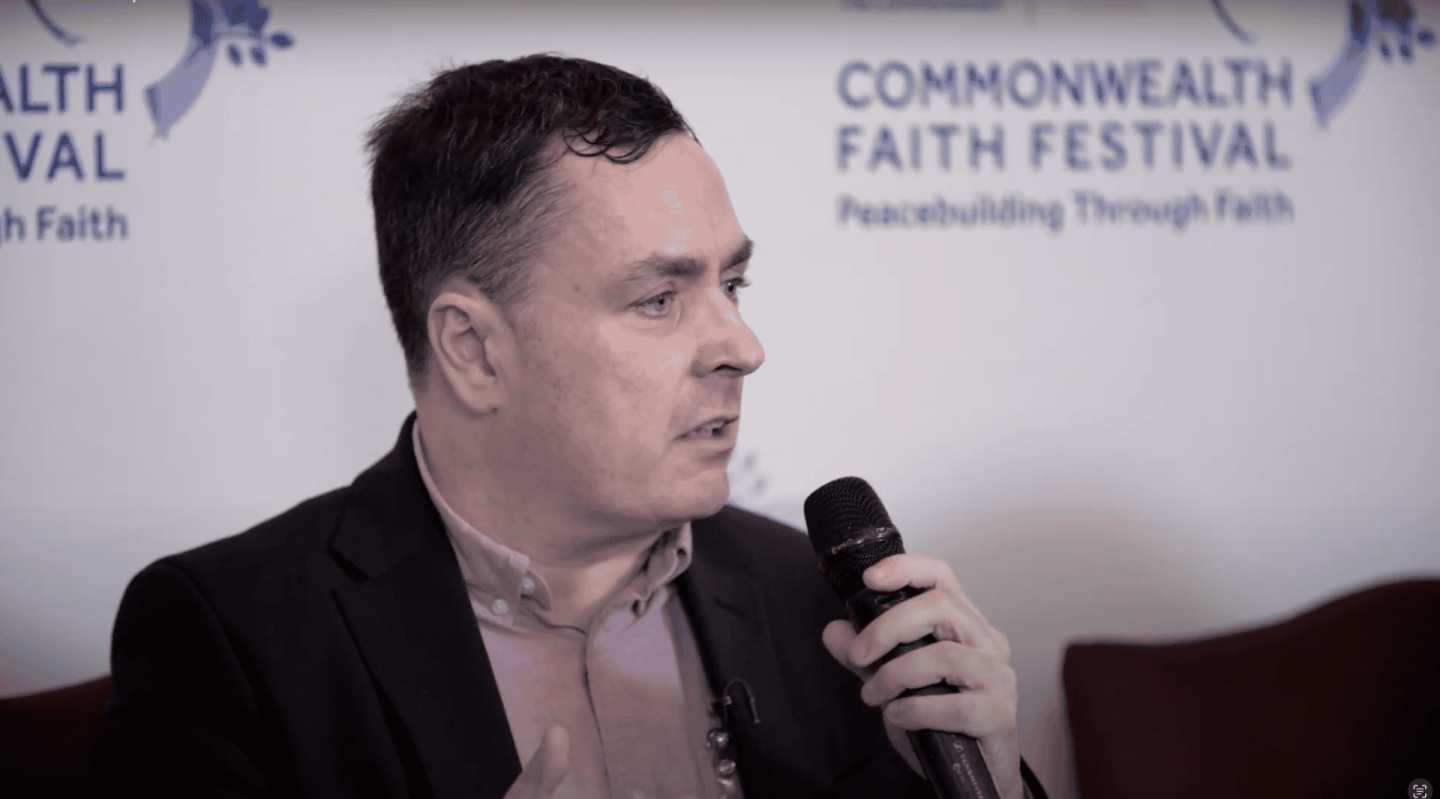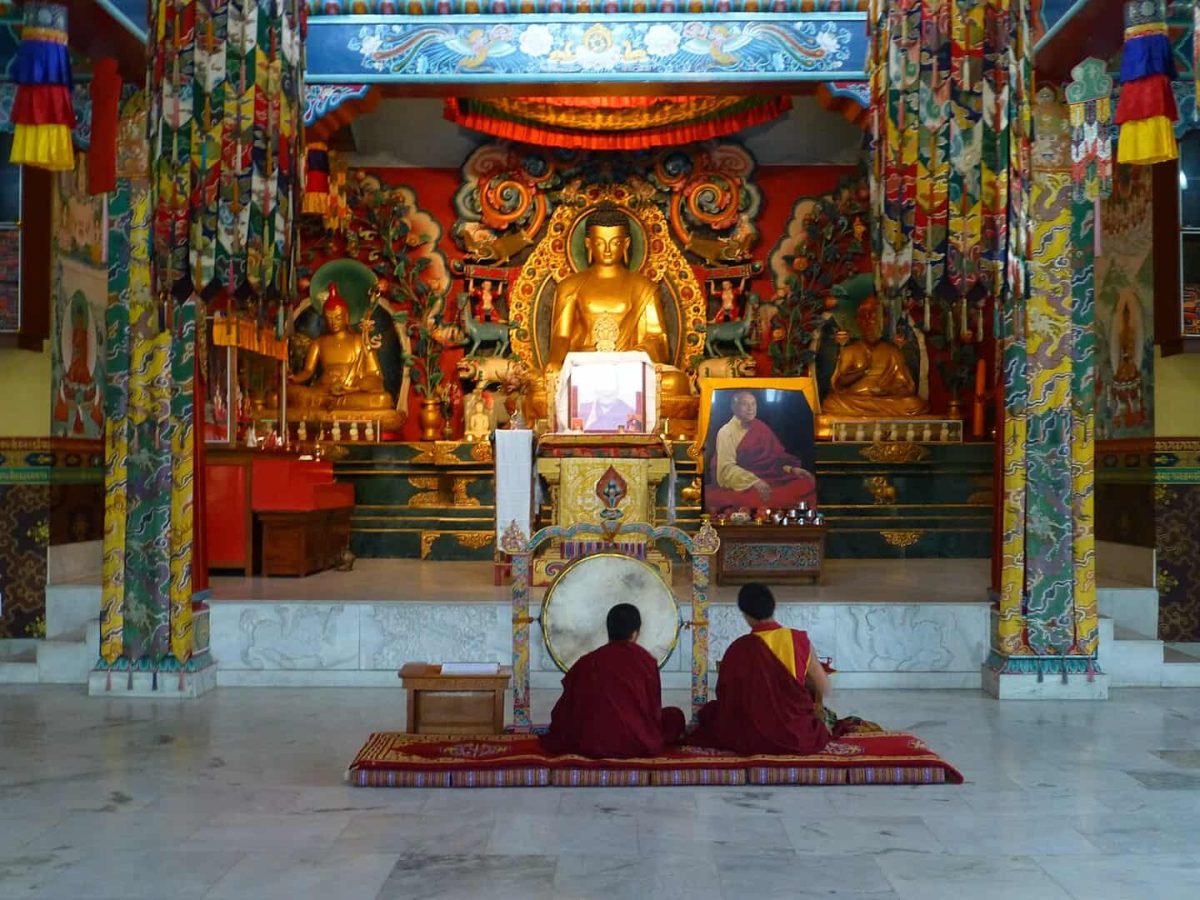Earlier this year, the Commonwealth Faith Festival, a partnership between the Commonwealth and the Khalili Foundation to foster peace-building through faith, was launched to an audience of diplomats, religious leaders, and academics in London as well as youth ambassadors across the Commonwealth via video link. The day’s discussions set the scene for peace-building initiatives by the youth ambassadors; the most outstanding of these will receive funding from the Khalili Foundation. Dr Martin Poulter, the Khalili Foundation’s Wikimedian In Residence, used a panel session to talk about his work to diversify Wikimedia and to call for more free sharing of cultural material. This is an edited text of the talk.
Wikipedia is the fifth most popular website, but it’s the only one of the top 70 that has a charitable purpose. All the rest have a profit motive. Wikipedia is an exception, driven by a vision that giving people open knowledge that they can access anywhere, immediately, for free, with no adverts is a good thing. The motive is to provide educational material, not to tell people what to think or what to do, but to give them something reliable and factual they can base decisions on.
It’s the biggest and most popular reference work ever created. Everybody uses it, and it’s so popular that even the people who don’t use it are using it. You might think, “I don’t go to Wikipedia. I type my question into Google, and a bit of text comes up answering my question.” Well, that text is normally harvested from Wikipedia or a similar source. Or you might think, “I’ve got a chat assistant. I talk to Siri or Alexa and ask it a question.” That’s often text read out from a Wikipedia article.

Maybe you don’t even use search engines anymore. There are the new chat bots, like ChatGPT. You can ask any question and it will give you an answer in any style. Those chat bots, those technologies were created by harvesting text from Wikipedia. They wouldn’t be able to talk about such diverse topics if that weren’t the case. So the quality of cultural information on Wikipedia is something that concerns all of us.
Wikipedia sets itself this very high standard of giving everyone in the world access to all knowledge and the ability to share knowledge and culture in their own language. But we know it’s way, way short of that ambitious standard. We know that English Wikipedia is much bigger than the others. We know that there’s a gender gap as well as geographical imbalances. A lot of these biases come from wider society: where is scholarship done? What’s considered worthy of celebration? Whose achievements are recorded?
The research Waqas Ahmed (Executive Director of the Khalili Foundation) and I have done is about cultural bias. We looked at coverage of the visual arts. The type of bias we’re looking at is not the kind that affects a single article. Particular articles might have problems, but that’s relatively easy to fix. There’s a more pernicious bias, which is systemic bias across the whole coverage of a subject. If there are thousands of articles and they’re all basically correct, but they’re all from within a particular cultural perspective, then Wikipedia is saying that by default art is associated with that culture.
We found that when you look up sculptors on Wikipedia, it’s overwhelmingly European sculptors and yet sculpture is found in all human cultures. Another example is a gallery of religious art that features the most high-quality images available to Wikimedia. There are about seven from Hinduism, about five from Judaism, six from Buddhism, one from Islam (when we first looked at it), and 70 plus from Christianity. It was not saying anything explicit, yet conveying that religious art is a Christian thing. Then you think of the rich history of Islam, which we’ll come back to; or Hinduism, with so many different traditions, so many kinds of colourful art; or Vajrayana Buddhism, where creating beautiful art is part of the exercise of the religion. It’s not that having a lot of information about Christianity is bad: it’s great that that’s freely available to people! But it needs to be balanced to give a truly global perspective.
The good news is that we can do something about it, you can all do something about it, and we are making progress, week by week and month by month. Because our patron is the great cultural philanthropist Sir David Khalili. His eight art collections, assembled over five decades, are all from outside the Western mainstream and each is considered the biggest or most complete of its kind. And so, working on Wikipedia, we’ve been able to share one and a half thousand images. A thousand of those relate to Islamic civilisation and Islamic history, broadly considered. These are now used in ninety languages and are hugely appreciated. They are used to illustrate hundreds of Wikipedia articles; that’s how we are reaching millions of image views every month.
I’ve been creating articles about aspects of Islamic history and culture. The sitaras: I’d never heard of these, these are the huge textile artworks that cover the door of the Kaaba or other sacred sites of Islam. We’ve been able to share pictures of them, explain how they’re made and their purpose. I write in English and I’m monolingual, but I’m seeing these articles translated into Arabic, Persian, Urdu, Indonesian, Malay, and — as of last week — Uzbek. It’s not me doing that; that’s the volunteer community appreciating the value of what has been given and seeing an opportunity to document an aspect of their own culture.
This is all descriptive. There’s no agenda of converting or de-converting anyone. It leaves the subjective response up to the reader, and I know people in the Arabic community whose reaction is a feeling of pride in their culture. Then there are people like me; I’m encountering a culture completely different from what I grew up with. I was not familiar with a sitara, the Musa va ‘Uj, or the Anis al-Hujjaj. For each of those, there is now a Wikipedia article that tells you what it is and why it’s important to that culture.
We’re also doing editathons. These are training events; we do them mainly with students in universities but they are public events. We’ve trained people to edit Wikipedia, to put in aspects of their culture or the culture they are learning about. That’s a lesson to everyone; you see something missing online, you don’t have to accept that. You can contribute!
You don’t have to be one of the world’s great art collectors to be a cultural philanthropist. We can all be cultural philanthropists, as individuals or institutions. If you’ve got a phone with a camera, you can take photographs. Obviously, you’re going to respect people’s privacy, respect sacred spaces; you’re going to make sure it’s okay to share your photo. But when you see that costume, that ceremony, or that music performance, take the photo, go to Wikipedia and click “Upload file”. Write one line telling us what you photographed and make it available for people to use. Show something that we have never seen, because we didn’t grow up in your part of the world, in your culture.
You can do this as an individual. Some people here are the bosses of organisations; you can do what Sir David has done and direct your organisation to work consensually with Wikipedia. No one’s entitled to your culture, but you can share it to reach millions of people. There’s no better way to reach a public audience.
A motto of the Wikimedia movement is “be bold”. We can actually diversify the online representation of faith and culture if we are bold, as people and as organisations. Thanks very much.






